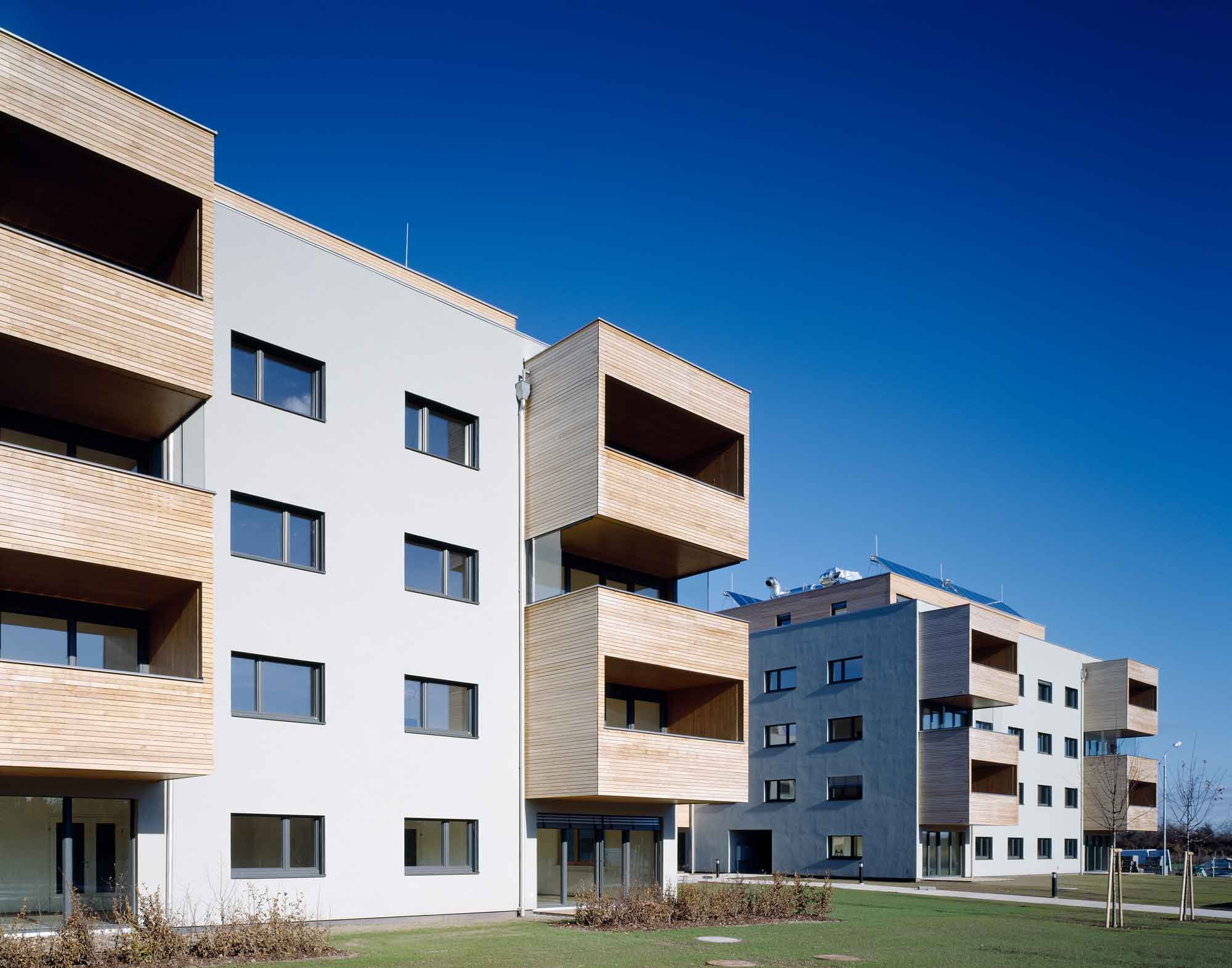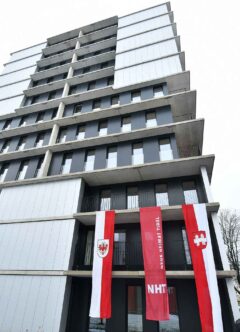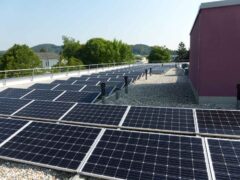Significant amounts of energy and resources are necessary to build, live in, renovate and deconstruct buildings. A high share of energy consumption and climate-damaging emissions around the world can be traced back to the building sector, with construction and buildings responsible for 38% of global carbon emissions.1 Numerous innovative developments in the field of sustainable building have been researched, trialled and put into practice in Austria in recent years. Pioneering strategies for buildings and residental areas are aimed at reducing the amount of energy and materials used, switching to renewable energy carriers, employing environmentally friendly construction materials and improving indoor comfort and quality of life – all at a comparable cost to a conventional construction method.
Building sustainably means considering the entire life cycle of a building and drastically reducing climate-damaging emissions in all phases – from construction and use of the building through to recycling. Grey energy and process-related greenhouse gas emissions from the materials used, play a key role here. Another aspect is reusing and recycling the construction materials used once a building has reached the end of its life to serve the circular economy. In the future, buildings should also be planned and equipped so as to be able to generate renewable energy themselves or store energy as part of an integrated local system.
Market analysis of sustainable construction in Austria
A recent study commissioned by the Federal Ministry for Climate Action, Environment, Energy, Mobility, Innovation and Technology (project management: pulswerk GmbH) conducted a market survey of newbuilds in Austria from 2010 to 2021 and analysed the relevance of innovative construction technologies for climate protection. Austria’s stock of buildings has increased by around 20% over these years, with 311,100 newbuilds – representing a total net floor area of 130 million square metres – constructed since 2010. Of these, 64% are of masonry construction, 22% are made of timber and 10% use reinforced concrete. In terms of the net floor area created, by contrast, the market share paints a somewhat different picture: here, masonry construction accounts for 60%, with reinforced concrete in second place at 24% and timber last with 10%. Although renewable energy systems became much more common in newbuilds over the period studied, some 14% of the new buildings are still heated by fossil fuels.

Calculations: pulswerk GmbH 2021; source of data: Statistics Austria, Buildings and Dwellings Register (GWR), 2021
Assessing sustainability aspects
The study focused on analysing three construction methods that are relevant to climate protection: timber construction, reinforced-concrete buildings fitted with thermally activated building systems, and those built using a (semi-)monolithic brick construction method. These construction methods were recorded and documented in a standard grid together with their respective strengths and weaknesses and the potential that they offer for achieving climate neutrality. The following aspects were evaluated: energy efficiency, climate protection, nature conservation, the circular economy, economic efficiency, and social worth and acceptance. As well as the quantitative distribution of the various construction methods, statements on building size classes, forms of use and regional distribution at federal state level, the study also compared the construction methods against the energy supply systems installed. All construction methods possess key qualities that can make a significant contribution to sustainability and climate protection. Put simply, timber construction’s biggest strength lies in the fact that it emits the least greenhouse gas emissions in the form of “grey energy”. Many of its elements can also be prefabricated. Buildings with thermally activated building systems score highly with their concepts for heating and cooling and are the best at supplying buildings with renewable energy in summer and winter. The (semi-)monolithic brick construction method produces straightforward, durable walls with very good insulating properties that take little time and effort to deconstruct compared to conventional heat insulation. The experts believe that the development of hybrid construction systems that harness the strengths of all three methods harbours significant potential for both newbuilds and renovation.
Monitoring trial buildings in Austria
Austria has seen a large number of state-of-the-art, energy-efficient newbuilds erected and existing buildings renovated using sustainable methods over the past few years. Model buildings have been evaluated under real-life conditions to ensure that planned energy efficiency performance targets can be met and the desired sustainability characteristics implemented and to identify areas where further improvements can be made. This issue presents selected results from some of these monitoring projects.
1 “2020 Global Status Report for Buildings and Construction” by the UN Environment Programme, globalabc.org/sites/default/files/inline-files/2020%20Buildings%20GSR_FULL%20REPORT.pdf
www.nachhaltigwirtschaften.at/de/sdz/projekte/bautechnologien-klimaschutz.php
Strengths
Renewable raw material
Forests act as carbon sinks
National and EU-wide investments in expansion and innovation
Highly skilled workers
Strong construction product exports
Opportunities
Expanding sustainable forestry in Austria
High degree of prefabrication leading to short construction times
Multi-storey timber house construction
Weaknesses
Fairly dependent on imported raw materials
Fire prevention regulations and legal restrictions
Particularly exposed to the shortage of skilled labour
Doubts over the scalability of the segment
Risks
Switching species: conifers are likely to have to be replaced by deciduous trees – is the timber industry prepared?
Quantities of damaged timber
Impact of climate change on raw material stores
Ability of buildings to withstand summer conditions


